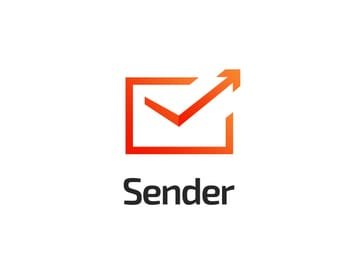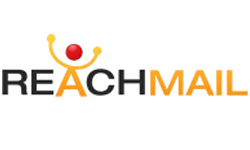Choosing the right email marketing tool is pivotal in today’s digital landscape, where email continues to be a critical channel for building customer relationships and driving sales. Amidst a sea of options, Sender and ReachMail stand out, each offering unique features tailored to different business needs. Whether you’re just embarking on your email marketing journey or looking to switch to a tool that more closely aligns with your business goals, this comparison aims to guide you through the nuances of Sender and ReachMail. Let’s dive into one of the most crucial aspects of email marketing tools: Ease of Use and User Interface.
| Sender | ReachMail |
|---|---|
 |  |
| G2 Score – 4.4 out of 5 stars | G2 Score – 4.0 out of 5 stars |
| TrustRadius Score – 5.2 out of 10 | TrustRadius Score – 10.0 out of 10 |
Ease of Use and User Interface
An intuitive user interface and overall ease of use can significantly impact your daily operations, influencing everything from campaign creation speed to your team’s ability to analyze campaign results effectively. Here’s how Sender and ReachMail compare in offering user-friendly experiences.
Sender: Simplicity Meets Functionality
Sender is renowned for its straightforward, intuitive interface, designed to make email marketing accessible to users of all skill levels. Upon logging in, users are greeted with a clean, organized dashboard that simplifies navigation and makes it easy to access all necessary features. Creating campaigns in Sender is a breeze thanks to its drag-and-drop email builder, allowing for quick assembly of visually appealing emails without any need for coding knowledge. This focus on simplicity, combined with powerful functionality, makes Sender an attractive option for small to medium-sized businesses looking for an efficient way to manage their email marketing.
ReachMail: Advanced Features with a Learning Curve
ReachMail offers a robust platform equipped with advanced email marketing features aimed at users looking for depth and flexibility in their campaigns. While its interface is comprehensive, new users might face a steeper learning curve to fully leverage the platform’s capabilities. ReachMail’s strength lies in its extensive customization options and advanced tools, including detailed segmentation, A/B testing, and comprehensive reporting. For businesses willing to invest time in mastering the platform, ReachMail provides a powerful suite of tools to fine-tune and optimize email marketing strategies.
The Verdict on Ease of Use and User Interface
The decision between Sender and ReachMail in terms of ease of use and user interface depends largely on your team’s familiarity with email marketing tools and the complexity of your email campaigns. If you prioritize a straightforward, quick-to-learn platform that still offers a solid range of features, Sender is likely your best bet. Its user-friendly design and intuitive campaign creation tools are ideal for businesses seeking efficiency without sacrificing effectiveness.
On the other hand, ReachMail is better suited for businesses looking for a comprehensive platform with advanced capabilities. While it may require a bit more time to get accustomed to, its wide array of features and customization options make it a powerful tool for those looking to dive deep into optimizing their email marketing efforts.
Pricing and Scalability
An ideal email marketing tool should not only fit within your current budget but also accommodate your business’s growth without requiring a platform change. Here’s how Sender and ReachMail measure up when it comes to pricing and scalability.
| Sender | Free Plan: Up to 2,500 subscribers and 15,000 emails per month. Includes basic features like newsletters and subscription forms. Standard Plan: Starting at $11/month for up to 5,000 subscribers and 60,000 emails. Includes advanced features like autoresponders and transactional emails. Professional Plan: Custom pricing based on higher volumes of subscribers and emails, including additional features like dedicated IP and webhooks. |
| ReachMail | Pricing is based on the volume of emails sent per month: Plans start from around $10 per month for up to 7,500 emails, with various tiers up to over $70 per month for higher volumes. Features include list management, detailed reporting, and advanced segmentation. Custom enterprise solutions are also available, which include additional features and dedicated support. |
Sender: Affordable and Scalable Solutions
Sender is celebrated for its competitive pricing structure, making it a go-to choice for startups and small to medium-sized businesses. It offers a compelling free plan that includes access to most of its features, allowing businesses to kickstart their email marketing efforts without any upfront investment. This free tier includes a generous number of emails per month to a sizable subscriber list, providing ample room for growth for new businesses.
As your business expands, Sender’s paid plans are designed to scale with your needs. These plans are based on the number of subscribers and emails sent, ensuring that businesses only pay for what they need. The transparent pricing model and the tiered structure make it easy for businesses to plan their growth and budget accordingly. Additionally, upgrading to higher tiers unlocks advanced features, supporting more sophisticated marketing strategies as your audience grows.
ReachMail: Flexible Plans for Varied Needs
ReachMail positions itself with a flexible pricing model that caters to a wide range of business sizes and needs. Like Sender, ReachMail offers a free plan designed for small businesses and startups to begin their email marketing journeys. This plan typically includes basic features and a limited number of emails per month, suitable for those just starting out.
For businesses with larger audiences or those in need of more advanced features, ReachMail provides several paid plans. These plans vary in terms of the number of emails, subscriber limits, and access to premium features like advanced segmentation, A/B testing, and detailed analytics. ReachMail’s pricing structure is designed to accommodate businesses as they grow, offering scalability through its tiered plans. The platform also emphasizes custom solutions for large enterprises, ensuring that even very large businesses can find a suitable option.
The Verdict on Pricing and Scalability
Choosing between Sender and ReachMail based on pricing and scalability hinges on your business’s current size, projected growth, and specific feature requirements.
Sender offers an attractive starting point with its free plan and straightforward, scalable pricing tiers, making it ideal for businesses looking for cost-effective growth. Its clear upgrade path and focus on providing value at every level ensure that businesses can grow their email marketing efforts in line with their audience expansion.
ReachMail, with its flexible pricing model and custom enterprise solutions, provides a versatile option for businesses of all sizes. Its capacity to cater to both small startups and large enterprises with varied needs makes it a strong contender for businesses seeking a platform that can adapt to their changing requirements.
Automation and Integration Capabilities
The depth of automation features and the breadth of integrations with other marketing tools can significantly influence the choice between email marketing platforms. Here’s a closer look at how Sender and ReachMail perform in these crucial areas.
Sender: Streamlined Automation for Marketers
Sender is designed to simplify email marketing automation, making it accessible even to those with limited technical expertise. The platform offers intuitive automation workflows that enable users to easily set up triggered emails based on subscriber actions, such as sign-ups, purchases, or engagement patterns. This functionality allows for efficient, targeted communication that can significantly enhance subscriber relationships and drive conversions.
In terms of integrations, Sender provides a solid selection of plug-and-play connections with popular e-commerce platforms, CRM systems, and other marketing tools. These integrations are crucial for creating a cohesive marketing ecosystem, enabling businesses to leverage data across platforms for more personalized and effective email campaigns.
ReachMail: Focused Automation with Essential Integrations
ReachMail emphasizes essential automation features that cater to businesses looking to streamline their email outreach. The platform offers basic automation capabilities, such as scheduled emails and autoresponders, which are easy to set up and manage. While it may not offer the same level of sophistication in automation as some competitors, its features are adequate for businesses with straightforward email marketing needs.
Regarding integrations, ReachMail provides key connectors to ensure smooth data flow between the email marketing platform and other essential business tools. While its range of integrations may not be as extensive as some larger platforms, it covers the necessities, allowing for effective campaign management and analytics.
The Verdict on Automation and Integration Capabilities
When it comes to automation and integration capabilities, your choice between Sender and ReachMail should align with your business’s specific needs for automation complexity and the necessity for integration with other marketing tools.
Sender stands out for businesses seeking comprehensive automation capabilities and robust integrations to create highly personalized and efficient email marketing campaigns. Its user-friendly approach to automation and solid integration options make it a compelling choice for marketers looking to maximize engagement through targeted communication.
ReachMail, offering straightforward automation features and essential integrations, is well-suited for businesses with simpler email marketing strategies or those just beginning to explore automation. Its focus on the fundamentals makes it a viable option for those who prioritize ease of use and basic functionality in their email marketing efforts.

Related: Check out our free SEO suite

Reporting and Analytics
Understanding the impact of your email marketing campaigns through detailed reporting and analytics is key to refining your approach and maximizing ROI. Let’s compare how Sender and ReachMail equip users with the data insights they need.
Sender: User-Friendly Analytics for Actionable Insights
Sender offers a straightforward and accessible analytics dashboard, providing users with essential metrics such as open rates, click-through rates, bounce rates, and unsubscribe rates at a glance. This immediate access to performance data allows marketers to quickly assess the effectiveness of their campaigns and make informed decisions on adjustments.
Moreover, Sender enriches its reporting with visual analytics, including graphs and charts that help depict campaign performance over time, making it easier for users to spot trends and patterns. The platform also supports segmentation in reporting, enabling more granitized insights into how different subscriber segments are engaging with emails. This level of detail is invaluable for tailoring future campaigns to better meet audience interests and behaviors.
ReachMail: Comprehensive Analytics for Deep Dives
ReachMail provides a robust suite of analytics tools designed for in-depth campaign analysis. Beyond basic metrics, the platform offers advanced features like geolocation tracking, device analysis, and engagement over time, allowing marketers to dive deep into the data and uncover nuanced insights about their audience’s preferences and behaviors.
One of ReachMail’s strengths lies in its ability to track and compare the performance of different campaign elements, such as subject lines or call-to-action buttons, through A/B testing results. This capability enables marketers to continuously refine their approach based on empirical data. Additionally, ReachMail’s reports can be customized and exported, offering flexibility for businesses that need to share insights across teams or integrate email marketing data with other business analytics.
The Verdict on Reporting and Analytics
The choice between Sender and ReachMail for reporting and analytics will largely depend on the depth of insights required and the preference for data visualization.
Sender is an excellent choice for businesses seeking an easy-to-use platform that offers clear, actionable insights into campaign performance. Its intuitive analytics dashboard and segmentation capabilities are suited for marketers who need to quickly adapt their strategies based on subscriber engagement.
ReachMail, with its comprehensive analytics and advanced reporting features, is ideal for businesses or marketers who rely heavily on data to drive their email marketing decisions. Its detailed analytics provide a deeper understanding of campaign effectiveness, making it a powerful tool for those committed to optimizing every aspect of their email communication.
Customer Support and Educational Resources
The level of customer support and the availability of learning resources are critical factors that can influence user satisfaction and success with an email marketing platform. Here’s how Sender and ReachMail stand out in these areas.
Sender: Prioritizing User Support and Learning
Sender places a strong emphasis on providing comprehensive support to its users. The platform offers multiple channels for customer support, including email, live chat, and a detailed FAQ section. This ensures that users can get timely assistance with any issues they might encounter, from technical glitches to questions about best practices in email marketing.
Beyond direct support, Sender is committed to user education and empowerment. The platform provides a wealth of educational resources, including blogs, guides, tutorials, and webinars, designed to help users improve their email marketing knowledge and skills. These resources cover a wide range of topics, from basic email marketing principles to advanced strategies and tips, making them valuable for both beginners and experienced marketers.
ReachMail: Focused Support and Tailored Resources
ReachMail also recognizes the importance of support and education in user success. The platform offers dedicated customer support through email and phone, ensuring that users can reach out for help when needed. The focus is on providing personalized assistance, with the aim of resolving user queries and issues efficiently.
In terms of educational resources, ReachMail offers targeted materials that focus on maximizing the effectiveness of the platform’s features. This includes detailed documentation, how-to articles, and best practice guides. While the range of topics might be more focused compared to Sender, the resources are tailored to help users get the most out of their ReachMail experience, particularly in optimizing email campaigns for better performance.
The Verdict on Customer Support and Educational Resources
When comparing Sender and ReachMail based on customer support and educational resources, both platforms demonstrate a commitment to supporting their users, though their approaches and offerings differ.
Sender excels in providing a broad range of educational content alongside multiple support channels, catering to a wide audience from beginners to advanced users. This makes it an attractive option for businesses and marketers looking for extensive learning materials and responsive support as they develop and refine their email marketing strategies.
ReachMail, with its focused approach to support and tailored educational content, is well-suited for users who prefer direct assistance and resources that are specifically designed to enhance their use of the platform. This approach is beneficial for those who value efficiency and aim to quickly leverage ReachMail’s features for improved campaign outcomes.
Choosing between Sender and ReachMail in terms of support and resources ultimately depends on your preferences for learning and the type of support you anticipate needing as you navigate your email marketing journey.
Integration Capabilities
The scope and ease of integration with other software tools, like CRM systems, e-commerce platforms, and social media channels, can significantly enhance the functionality and effectiveness of your email marketing efforts. Here’s a look at how Sender and ReachMail fare in this critical area.
Sender: Seamless E-commerce and CRM Integrations
Sender is designed to easily integrate with a wide range of platforms and services, particularly focusing on e-commerce and CRM systems. These integrations allow businesses to automate the flow of customer data into their email campaigns, enabling more personalized and targeted marketing efforts. For e-commerce businesses, integrating with platforms like Shopify, WooCommerce, or Magento means they can effortlessly trigger email campaigns based on customer behavior, such as abandoned carts or recent purchases.
Additionally, Sender’s API provides flexibility for custom integrations, offering businesses the capability to connect their unique stack of tools and systems. This adaptability is crucial for businesses looking for a scalable email marketing solution that can grow and evolve with their needs.
ReachMail: Focused Integrations for Email Marketing Efficiency
ReachMail emphasizes integrations that bolster the efficiency and effectiveness of email marketing campaigns. While it may not offer as broad a range of integrations as some competitors, ReachMail focuses on key integrations with CRM systems and web services that are most beneficial to email marketers. These integrations facilitate the automation of email list management and campaign targeting, making it easier for businesses to maintain up-to-date subscriber lists and segment their audiences based on specific criteria.
ReachMail also provides API access for businesses that require custom integrations, ensuring that even highly specialized tools and systems can be connected to the email marketing platform. This capability is particularly useful for businesses with custom-built systems or those using niche tools that are central to their operations.
The Verdict on Integration Capabilities
The decision between Sender and ReachMail regarding integration capabilities should be guided by the specific tools and platforms your business currently uses or plans to use.
Sender offers a robust set of integrations, particularly with e-commerce platforms, making it an excellent choice for online retailers looking to leverage customer data for more personalized email marketing campaigns. Its flexibility with custom integrations via API also makes it suitable for businesses with unique technological ecosystems.
ReachMail, with its focused approach to integrations, provides essential connections that enhance the efficiency of email marketing operations. It is well-suited for businesses that prioritize streamlined email marketing processes and have a clear understanding of the integrations critical to their strategy.
Both platforms offer the flexibility of API access for custom needs, but your preference might lean towards the platform that best aligns with your existing software tools and the level of integration complexity your business requires.
Conclusion
Choosing between Sender and ReachMail hinges on aligning the platform’s features with your business’s specific needs and goals. Sender shines for those seeking a user-friendly interface with robust e-commerce integrations, making it ideal for online retailers aiming to personalize their email campaigns based on customer behavior. Its wide range of integrations and scalability also appeals to businesses looking for growth without switching platforms.
On the other hand, ReachMail is tailored for efficiency in email marketing operations, offering focused integrations and a streamlined approach that benefits marketers prioritizing direct impacts on sales and engagement. While both platforms provide valuable API access for custom integrations, your decision might ultimately rest on which platform’s core features and integration capabilities best match your current tech stack and marketing strategy. Whether your focus is on detailed analytics, comprehensive automation, or seamless integration with other tools, evaluating each platform’s strengths in relation to your unique requirements will guide you to the best choice for your email marketing needs.
Read Next:
- ConvertKit vs Benchmark Email: The Best Email Marketing Tool for 2024
- ConvertKit vs MailerLite: The Best Email Marketing Tool for 2024
- ConvertKit vs Campaign Monitor: The Best Email Marketing Tool for 2024
- ActiveCampaign vs ReachMail: The Best Email Marketing Tool for 2024
- ActiveCampaign vs SalesHandy: The Best Email Marketing Tool for 2024






















Comments are closed.